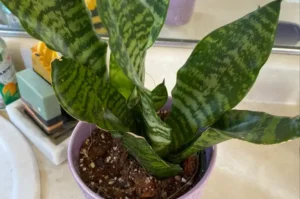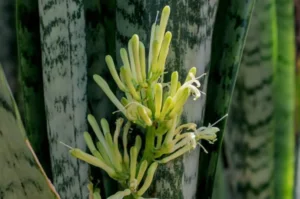Snake plants (Dracaena trifasciata), often called mother-in-law’s tongue, are known for their striking appearance and low-maintenance nature. If you’ve recently propagated one through leaf cuttings, division, or offsets, providing the right care from the start is key to helping it grow into a strong and healthy plant. This guide covers everything you need to know about caring for a propagated snake plant from the moment roots appear.
Understanding Snake Plant Propagation
Propagation is the process of creating new plants from existing ones. Snake plants are especially easy to propagate, making them a great option for beginners.
Common Methods:
- Leaf Cuttings: A healthy leaf is cut into segments and either rooted in water or directly in soil.
- Rhizome Division: The plant’s underground stems (rhizomes) are split, each part containing roots and shoots.
- Offsets (Pups): Small new shoots growing from the base are separated and replanted.
Each method has different growth speeds and care needs, but the overall process of helping the new plant thrive remains similar.
Potting Your New Snake Plant
Once your propagated piece has grown roots, it’s time to pot it properly.
Selecting a Pot
- Use a pot with drainage holes to prevent soggy soil.
- Choose a size that comfortably fits the roots but isn’t overly large.
Best Soil Mix
- A well-aerated, fast-draining soil is ideal.
- A commercial cactus or succulent mix works well, or mix equal parts potting soil, coarse sand, and perlite for a DIY option.
Watering Guidelines
Watering is one of the most important and most commonly mishandled parts of snake plant care.
Tips for Watering:
- Wait until the top couple of inches of soil are dry before watering.
- Water thoroughly, allowing excess to drain out.
- Water less frequently in colder months, when growth slows down.
Important: Snake plants store water in their leaves, so they are very drought-tolerant. Too much water can lead to root rot, especially in young, propagated plants.
Light Requirements
Snake plants are flexible when it comes to light, but newly propagated ones benefit from certain conditions.
Lighting Tips:
- Place in bright, indirect light to encourage root and leaf development.
- While they can tolerate shade, low light can slow down new growth.
- Keep out of direct, harsh sunlight, especially during the early stages of growth
Ideal Temperature and Humidity
Temperature:
- Snake plants prefer warm environments between 60°F and 85°F (16°C to 29°C).
- Avoid exposing them to drafts or temperatures below 50°F (10°C).
Humidity:
- These plants do well in standard indoor humidity levels.
- Extra humidity is not required and may even be harmful if it encourages overwatering.9
Fertilizing Young Snake Plants
Fertilizer isn’t essential right away, but it can help once the plant is established.
Feeding Guidelines:
- Start feeding around 4–6 weeks after planting.
- Use a diluted, balanced liquid fertilizer (e.g., 10-10-10 or 20-20-20).
- Feed only once a month during the growing season (spring and summer).
- No fertilizer is needed in fall or winter.
Observing Plant Health
Healthy propagated snake plants will show steady progress, but problems can arise without proper care.
Signs of Health:
- Upright leaves with firm texture
- Gradual leaf growth
- Strong root development
Warning Signs:
- Yellow Leaves: Often a sign of overwatering
- Mushy Stems or Leaves: Can indicate rot
- Slow Growth: May be caused by insufficient light or cold temperatures
Basic Maintenance Tips
Minimal upkeep goes a long way with snake plants. Here’s how to keep yours looking its best:
- Remove yellow or damaged leaves with clean scissors.
- Dust leaves regularly with a damp cloth to help them breathe.
- Rotate the plant every few weeks to ensure even growth.
Frequently Asked Questions (FAQs)
How long does it take for a propagated snake plant to grow roots?
Root development usually begins within 3 to 6 weeks, depending on light, temperature, and propagation method.
Can I grow a snake plant cutting in water and then transfer it to soil?
Yes. Once the roots are about 1–2 inches long, transfer the cutting to soil for more stable growth.
Why isn’t my propagated snake plant growing?
Slow or no growth could be due to low light, improper watering, or the plant simply taking time to adjust after propagation.
Do I need to fertilize a new plant right away?
No. Wait until the plant has established roots and is actively growing—typically 4–6 weeks after potting.
Is it normal for a newly propagated plant to drop a leaf?
Yes, minor leaf loss can happen while the plant acclimates. As long as new roots are growing, it should recover.
Conclusion
Caring for a propagated snake plant doesn’t require expert skills, but it does demand patience and attention to detail. By providing the right pot, soil, light, and water, you set your new plant up for long-term success. Remember that less is often more, especially when it comes to watering. With time, your propagated plant will mature into a beautiful and resilient addition to your home or office.
Whether you’re new to indoor gardening or expanding your green collection, nurturing a propagated snake plant can be a deeply satisfying experience. Give it what it needs, and it will thrive for years to come.






